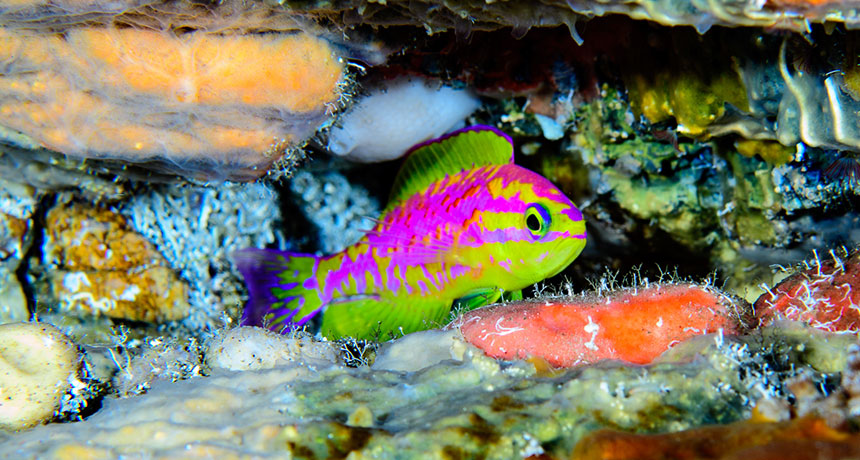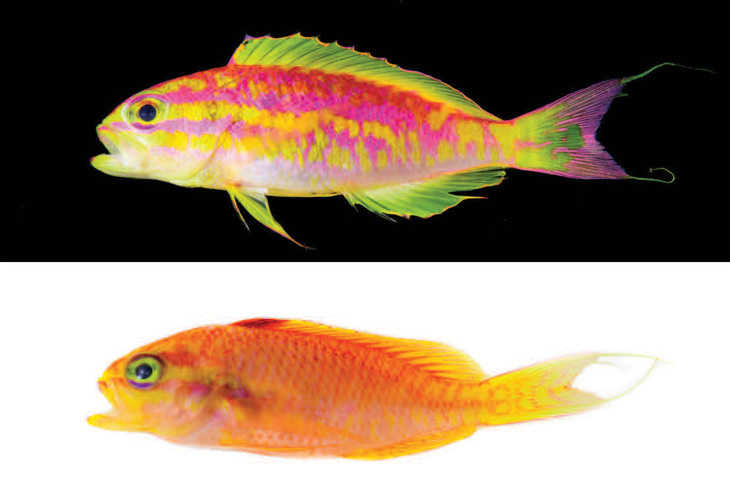This new fish species displays a splash of highlighter hues
The technicolor creature was discovered in a mid-Atlantic reef 100 to 130 meters down

BRIGHT SPOT Tosanoides aphrodite lives 100 to 130 meters below the ocean surface in a rocky, mid-Atlantic reef.
Luiz Rocha © California Academy of Sciences







